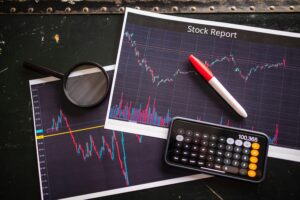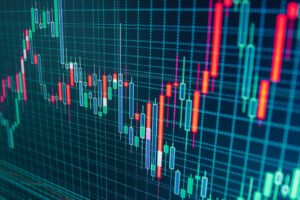China will not be the engine of oil again, as in the last 20 years
Geopolitics, economic growth, climate, monetary and fiscal policy… The commodities market is one of the most permeable to more and more catalysts and arguably one of the most interconnected of all on the investor planet. This is recognized by Kerstin Hottner, head of commodities at Swiss management company Vontobel, who highlights the need for commodity managers to be aware not only of the evolution of interest rates in the dollar, or energy, but also what OPEC is doing, the growth of global GDP, the stimulus to the Chinese economy or even the climate in different regions of the planet.
At what levels do you see oil for 2025?
The oil market is very sensitive. For now, the fundamentals do not look bad. Stocks are low and OPEC continues to keep its barrels off the market. But if the cartel returns its barrels to the market next year, which would mean about 180,000 more per day, added to all those from the non-OPEC countries, the growth in production would be quite rapid. That is, if the US, Brazil, Guyana, Canada, etc. If they produce what we expect them to produce and OPEC returns to the market, then the market will definitely be oversupplied and the price of oil could fall to $50, the breaking point for shale producers in the US to force them to shut down or reduce production. Iran is the counter-factor here. We don’t know if it will have to withdraw its barrels or if it will no longer be able to export as much, which would balance the market quite a bit. That is, the market depends a little bit on geopolitics, but generally speaking, we have a bearish outlook for oil for 2025.
Geopolitics, the big ‘driver’ of crude oil?
I think in the end it always depends on several factors, not just one. In the field of commodities, it is always important to know how much supply reaches the market. There could be wars, but if in the end it doesn’t affect the supply and the oil reaches the world market, even if oil prices can sometimes move around 100-120 dollars per barrel as we saw with Russia two years ago a few weeks ago, then should come back in time. I think the long-term drivers are ultimately production, GDP growth and global demand. Demand growth is good. I think this year it will grow by around one million barrels, which is the average for the last 20 years. But there is a structural problem and that is China. It is and has been the biggest oil importer in the world. However, some structural changes are taking place. They have a huge penetration rate of electric cars, so about 50% of car sales are now going to electric cars, already taking a few hundred thousand barrels of gasoline out of demand. In addition, they have switched from diesel trucks to LNG trucks because natural gas was cheaper – and still is – and it’s also taking a few hundred thousand barrels off the oil market. And this is not something that will change. Therefore, China is no longer likely to be the driver of demand growth, as it has been for the past 20 years. They accounted for about 50% of demand growth every year. And that will cease to be. And this is a structural issue.
Which raw materials have the greatest potential?
We still like precious metals. Gold and silver have some potential. We also benefited from its price rise in the fund, we were overweight. That was our biggest conviction in the last two months. We took some profits now, we de-risked ahead of the election in what has turned out to be a good move, but gold has a lot of work to do, so if there are more interest rate cuts, we will obviously see more flows out of ETFs. Gold ETFs have been quite disappointing. Now that interest rates are falling, we should see more ETF flows and of course what has been a big driver has been central bank buying of gold over the last two years and that is not going to go away either. India, Singapore, Turkey, Poland… They’re all buying gold and trying to reduce their reserves, dumping US dollar assets and buying gold. And this is not something that’s going to stop in a few months, this is something that’s going to go on for years, maybe even a decade. And this, added to more ETF flows, will probably support gold’s good performance in the market.
Trump, is he good for commodities?
Higher tariffs and consequently lower growth – probably – and also lower immigration are not good for commodities in general. A higher or stronger dollar is not very good for them either. There are many counterfactuals that cannot support commodities. But I think if we go back to Trump, the commodity that would probably suffer the most is the grain market. Soybeans for example. However, agricultural materials are not the only ones to suffer. For metals, Trump’s arrival is not good either, as China exports many products that it produces with copper, aluminum, zinc etc, like electric vehicles, solar panels… and more tariffs will not help. After all, the effect will ultimately depend on how the US and China negotiate. What we have learned so far is that Trump should be taken seriously, but not literally. So when you talk about 60% tariffs on China, it’s more of a negotiating tool.
Do you see more opportunities in metals?
I think copper and aluminum will suffer a bit in the coming months. I wouldn’t touch base metals in the coming months because Trump will intensify his talk around tariffs to increase his negotiating power. I think this risk has not been fully priced into the metals market. But once China is confident about the tariff policy that the US wants to implement, it will increase its stimulus, which will affect its infrastructure and will also try to stimulate domestic consumption and this will then support base metals. So I think starting from the second quarter of 2025, there will be a good opportunity for copper and aluminum. We also like, but structurally, tin. It’s a very small raw material, but it’s used in electronics, in circuits. There are only a few countries that produce tin, but the demand growth is significant in the coming years, so automation and electrification are driving that and the deficit market that it is immersed in will continue to be so. Do you now expect changes in monetary policy that could affect commodities? What’s worrying the market right now is that we won’t see as many rate cuts next year. We might see another cut in December, by 25 basis points, but I think that’s not clear either and the market price at the moment is three cuts of 25 basis points next year. If we see high tariffs, if we see higher inflation, the Fed might not be able to deliver on that, and we will see higher rates for longer. This is definitely a problem. Maybe more for bond markets and to a lesser extent equity markets. For commodities maybe it plays a small role, they are ultimately not a big catalyst. What GDP growth does is more important. Maybe for gold a little bit, but only marginally.
Car manufacturers announce they will not grow as they expected. Bad news for palladium or platinum?
Yes, I think it has already materialized in its price. Palladium is trading close to 800 dollars compared to the almost 3,000 paid in 2022. So I think it’s already discounted in its price. Now, because prices are so low, some producers in North America have started to reduce production. We haven’t seen that in South Africa, but if we see that there as well, I think that could mean that their prices will go up next year. The growth of electric vehicles is fantastic, but over the last year it has also been a bit disappointing compared to the high expectations that had been created. Also because, especially in Europe, more hybrids and fewer pure electric vehicles have been bought, which means that palladium and platinum are still needed. I think this is positive for both, but in the long term and with the penetration of electric vehicles, prices will go down. Platinum does have a longer term, because the demand for palladium from the automotive industry accounts for 80% of total palladium production, whereas in the case of platinum it is around 40%. That is, its drivers are more diverse and include jewelry, hydrogen and many other things that can support the price.
The path to appropriate diversification
For the head of commodities at Swiss management company Vontobel, the commodities market is one of the most interconnected financial markets on the planet. Indeed, Hottner assures that although the reference index of the Vontobel Fund – Commodity H (hedged) EUR is the Bloomberg Commodity Index, which reflects the prices of 24 commodities, its investment universe is broader and includes some commodities outside this reference. ex tin or cocoa. “We can invest in some 30 commodities, and even if we are now only invested in 25 commodities, it is a clear example of diversification,” he explains. “Moreover,” he continues, “sectors respond to very, very different factors. Cereals respond to weather conditions, US natural gas too, precious metals to interest rates and the dollar, energy to what the economy is doing. OPEC, GDP growth and geopolitics and base metals, what China does. There are many and various factors that influence that, so just by keeping this broad basket of commodities, there’s already great diversification potential.” Indeed, the manager highlights how the performance of the Bloomberg commodity index is closely linked to the performance of inflation – even more closely than the performance of gold itself, as is often thought – and is thus positioned as one of the better ways to protect yourself from inflation. And even more so if you operate in the market with a fund that invests through derivatives in commodities and not via variable income, with companies engaged in the extraction or commercialization of basic resources.
About the Vikingen
With Vikingen’s signals, you have a good chance of finding the winners and selling in time. There are many securities. With Vikingen’s autopilots or tables, you can sort out the most interesting ETFs, stocks, options, warrants, funds, and so on. Vikingen is one of Sweden’s oldest equity research programs.
Click here to see what Vikingen offers: Detailed comparison – Stock market program for those who want to get even richer (vikingen.se)













